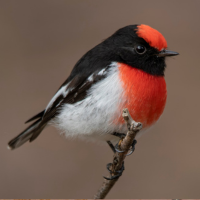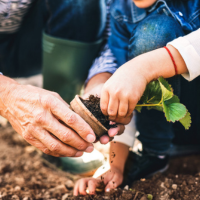7th June 2023
Heart
Welcome to the final day of International Nature Journaling Week 2023!
Today, our theme is all about the heart. We will explore feelings, intuition, and a sense of connection with the more-than-human world.
Nature journaling is a practice that can help us fall in love with nature, and this love, in turn, motivates us to live more gently on this precious planet.
Live event
*You can use a timezone converter to check the workshop time in your area.
7th June, 4-5pm Pacific (PDT); 8th June, 9-10 am Brisbane (AEST).
Melinda Nakagawa - Opening Your Heart to Connect with Nature
Nature journaling prompts and ideas
The practice of using a sit-spot can help us become familiar with a small patch of nature and notice the changes over time. Bethan Burton describes why and how to use a sit-spot in your nature journaling practice in this blog post. Connecting with a sit-spot can develop feelings of love and care as you come to know your local area in a deeper way. Your nature journal can become your sit-spot companion as you journal about what you experience there.
Connecting with an individual animal or plant can be a deeply moving experience. You might notice that a particular individual bird, or other animal, visits your garden or neighbourhood regularly. Spend time observing and getting to know this individual and put these encounters down in your nature journal. The individual will start to feel like a friend, and you will look forward to the interactions you have with each other. You might find you need to sit very still to allow your friend to feel safe and comfortable. Let this be a time for you to relax and sink into the feeling of calm that arrives when we allow ourselves to be still in nature.
Plant something in a pot or garden and make taking care of it part of your daily routine. Tending to a plant can bring calm and joy as well as foster a sense of stewardship for the natural world. You might like to grow some herbs on a sunny windowsill or create a vegetable or flower garden. Nature journal what you notice as your plants grow and change over time.
The patterns and cycles of nature have a lot to teach us about our own lives. When we open our hearts and minds to receiving these lessons, we can find solace and calm. Watching a leaf or a flower change over time can teach us about the beauty of the aging process, and the cycles of life in nature can help us find acceptance of these things in our own life. Allow yourself to look to nature for lessons about life and explore your thoughts and feelings by writing about them in your nature journal.
Clare Walker Leslie’s book ‘A Year in Nature: A memoir of solace’ is a wonderful example of how the nature journal can be used to explore and express these feelings and ideas.
Poetry can be a meaningful way to connect with our feelings in nature. If you do not know how to begin, reading the nature poetry of others can be inspiring. Emilie Lygren is a poet whose work has a strong connection to nature. Explore Emilie’s website where you will find written poems as well as recorded readings.
Start by sitting quietly and observing what you experience with all of your senses. In your nature journal, write down these sensory observations as well as any feelings that come up. Simile and metaphor are two other poetry techniques that you can use to help make connections between things and evoke emotion. Let yourself play with words and express your feelings without judgment.
The feeling of awe refers to the overwhelming sense of wonder, reverence, and astonishment experienced when encountering the grandeur, beauty, or vastness of the natural world. But awe can be experienced anywhere, including in an everyday suburban backyard.
In his book, ‘Awe: The New Science of Everyday Wonder and How it Can Transform Your Life’, author Dacher Keltner writes about finding awe in our everyday lives and how tuning into this feeling is something we can cultivate with practice.
Take some time in nature with the intention of being open to the feeling of awe. Let yourself marvel at a caterpillar munching on a leaf or the changing cloud shapes in the afternoon sky. Your nature journal can be a place to describe these experiences of awe so that you can cultivate tuning into this powerful feeling.







